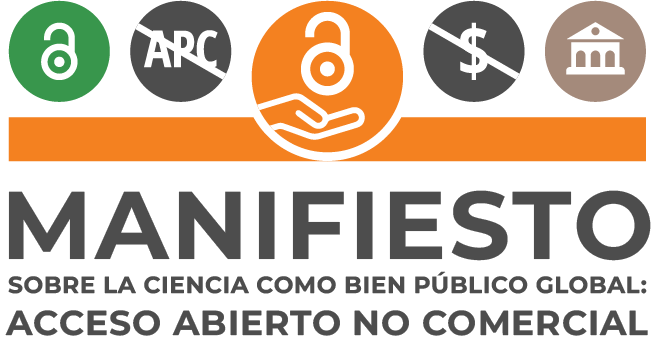Urban mobility, social cohesion, equity and quality of life in Guayaquil
a systematic review
DOI:
https://doi.org/10.59343/yuyay.v5i1.120Keywords:
Urban mobility, social cohesion, equity, public transport, Latin AmericaAbstract
Urban mobility has become a critical factor for the sustainable development of Latin American cities, directly influencing social cohesion, territorial equity, and the quality of life of their inhabitants. This article presents a systematic review of the relationship between urban transport and these social dimensions in the context of Guayaquil, Ecuador. Key concepts—urban mobility, social cohesion, transport equity, and quality of life—are clearly defined, and evidence is drawn from academic literature and institutional documents from both Latin America and comparable regions. The public transport system of Guayaquil (particularly the BRT Metrovía and conventional urban buses) is evaluated in terms of accessibility, efficiency, fares, user perception, and its impact on territorial equity. Additionally, successful experiences from Latin American cities such as Bogotá, Medellín, Curitiba, and Santiago de Chile are compared, identifying transferable lessons. The findings reveal that inclusive and efficient urban mobility can foster social cohesion and reduce inequalities by improving access to opportunities. However, Guayaquil still faces challenges in transport coverage, modal integration, and service quality, limiting its potential to enhance equity and quality of life. The discussion highlights gaps in local public policies—such as the lack of a truly integrated and equitable transport system—and proposes evidence-based strategies to address these shortcomings. These recommendations include improvements in participatory planning, expansion of the network to underserved peripheral areas, fare integration, targeted subsidies, and the promotion of sustainable modes of transport, all aimed at fostering a fairer and more cohesive urban transport system.
Downloads
References
Alzueta, F. (2012). Gestión de la calidad total.
CAF – Banco de Desarrollo de América Latina. (2009). Observatorio de Movilidad Urbana (OMU) latinoamericano: Movilidad urbana en América Latina. Río de Janeiro: CAF.
Aprigliano, V., Barros, G. T., Santos, M. V. S. M., Toro, C., Rojas, G., Seriani, S., ... & de Oliveira, U. R. (2023). Sustainable Mobility Challenges in the Latin American Context. Sustainability, 15(20), 14748. https://doi.org/10.3390/su152014748
Slesinski, S. C., Indvik, K., Barrientos-Gutierrez, T., Bolinaga, A., Caiaffa, W. T., Diez-Canseco, F., ... & SALURBAL group. (2024). Research Translation to Promote Urban Health in Latin America: The SALURBAL Experience. Journal of urban health, 101(6), 1069-1086. https://doi.org/10.1007/s11524-024-00877-5
CEPAL. (2002). Evaluación del impacto socioeconómico del transporte urbano en Bogotá: el caso TransMilenio. Santiago: Naciones Unidas, CEPAL, Div. de Recursos Naturales e Infraestructura.
Concepto.de. (2022). Movilidad urbana – Qué es, concepto, problemas y ejemplos.
Concepto.de. (2022b). Calidad de vida – factores e indicadores.
Gobierno de Ecuador – Ministerio de Obras Públicas. (2023). Política Nacional de Movilidad Urbana Sostenible del Ecuador. Quito: MTOP. [PDF].
Naranjo, Y., Arellano, B., & Roca, J. (2020). Estructura, imagen urbana, transporte y movilidad a través de los años en Guayaquil. Ponencia 13° Congreso CTV, Barcelona. DOI:10.5821/ctv.8475.
Rodríguez Porcel, M., Pedraza, L., Oliveira Moraes, D. M. A., & Sandoval, D. (2020, 26 octubre). Inclusión y participación en el sistema de transporte de Curitiba. Moviliblog BID.
SEGIB. (2007). Cohesión social: un nuevo marco para las políticas públicas en la región. Madrid: Secretaría Gral. Iberoamericana (Documento oficial XVII Cumbre).
Gómez-Lobo, A. (2025). Putting the Passenger First: What Works and What does not Work in Urban Mobility Reforms in Latin America and the Caribbean. https://doi.org/10.18235/0013367
StudySmarter. (2023). Equidad en el transporte: accesibilidad & justicia. StudySmarter Architecture.
TransMilenio S.A. (2023). Encuesta de Percepción Ciudadana 2023 – Bogotá Cómo Vamos. [Resultados destacados].
WRI Ross Center. (2019). Metrocable – Ross Prize for Cities Finalist. World Resources Institute.
Ingeniería UC. (2013, 8 febrero). Estudio UC comparó el Transantiago con otros sistemas de transporte de Latinoamérica. Noticia, Facultad de Ingeniería PUC Chile.
Banco Mundial. (2025, 10 mayo). Movilidad que genera oportunidades: cómo el transporte público ayuda a crear empleos en América Latina y el Caribe. Banco Mundial – Artículos.
El Universo. (2024, 27 agosto). ¿Cuántos usuarios de la Metrovía pagarán $0,45 al no calificar para el aporte social? El Universo, sección Ecuador.
Streetsblog – Daher, A. (2024, 17 octubre). Curitiba: 50 Years of Lessons from the World’s First BRT. Streetsblog USA.
Primicias. (2024, 11 diciembre). Guayaquil: Esta será la tarifa de la Metrovía desde el 1 de enero de 2025. Primicias.ec.

Published
How to Cite
Issue
Section
Categories
License
Copyright (c) 2025 Darwin Gabriel Manzano-Cuenca

This work is licensed under a Creative Commons Attribution-NonCommercial-NoDerivatives 4.0 International License.
You are free to:
Share — copy and redistribute material in any medium or format.
- Licensor cannot revoke these freedoms if you follow the terms of the license.
Attribution — You must give credit appropriately, provide a link to the license, and indicate if any changes have been made. You may do so in any reasonable way, but not in a manner that suggests that you or your use are supported by the licensor.
NonCommercial — You may not use the material for commercial purposes.
NonDerivatives — If you remix, transform, or create from the material , you may not distribute the modified material.
No additional restrictions — You may not apply legal terms or technological measures that legally restrict others from making any use permitted by the license.






















